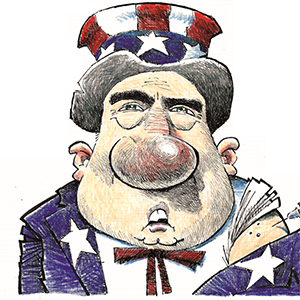Exxon CEO says new form of graphite boosts EV battery life, extends range
Published in Business News
Exxon Mobil Corp. said it has invented a new form of graphite that can increase the life of electric-vehicle batteries by as much as 30%.
“We’ve invented a new carbon molecule that will extend the life of the battery by 30%,” Chief Executive Officer Darren Woods said at the University of Texas at Austin’s Energy Symposium on Friday. It’s a “revolutionary step change in battery performance.”
The invention is being tested by several EV manufacturers, Woods said. Used on the anode side of the battery, the synthetic graphite allows for faster charging, a longer lifespan and longer range for electric vehicles. Exxon this week announced the acquisition of several production assets from Chicago-based Superior Graphite, which will enable the company to scale-up manufacturing, with a goal of commercial production by 2029.
The Texas oil giant doesn’t intend to become a battery maker but it plans to use its refineries, chemical plants and laboratories to produce some of the materials to be used in the energy transition. It also has plans to extract lithium, a major battery component.
“We don’t do wind and solar, we have no issues with wind and solar, but we don’t have capability in that space,” Woods said. “But we do have capability of transforming molecules and there are enormous opportunities in that space to use hydrogen and carbon molecules to meet the growing demand.”
Exxon has long been a player in the vehicle-battery space. The company invented the lithium-ion battery in the 1970s and created the plastic film for the first rechargeable version in 1991. Almost two decades ago, Exxon created a new type of material used to separate battery components.
While Exxon is moving ahead with its battery-material business, the outlook for hydrogen, another targeted growth area, is looking more challenged. The company has warned it may delay a low-carbon hydrogen and ammonia project in Baytown, Texas, due to a lack of interest from customers.
The shortening of the timeframe available to claim hydrogen tax credits under President Donald Trump’s so-called Big Beautiful Bill may also slow market development, Woods said.
“Our big concern today around low-carbon hydrogen is whether there’s enough time within that bill to incentivize the development of the market,” Woods said.
A viable hydrogen industry based on market forces is essential to supporting multi-billion dollar investments, he said.
“We can’t do it on charity.”
©2025 Bloomberg L.P. Visit bloomberg.com. Distributed by Tribune Content Agency, LLC.












Comments